
Adjustable Bed vs Hospital Bed: Which Is Better for Elderly at Home?
📋 KEY TAKEAWAYS
| Feature | Hospital Beds | Adjustable Beds |
|---|---|---|
| Price Range | $1,000-$5,000+ | $400-$3,500+ |
| Height Adjustment | Yes - 7" to 30" range | No - fixed height |
| Safety Rails | Included, medical-grade | Usually not included |
| Transfer Safety | High (adjustable height) | Limited (fixed height) |
| Medicare Coverage | Yes (when prescribed) | Rarely covered |
| Mobility Support | Strong (medical design) | Limited (comfort focus) |
| Best For | Fall risk, limited mobility, long-term care | Good mobility, minimal assistance, comfort focus |
Best for Most Elderly: Icare Adjustable Electric Home Hospital Bed IC333 – Combines medical features with home-friendly design
Budget Option: Costcare Semi-Electric Bed B120C – Essential features at $1,068
For Fall Prevention: Ultra Low Hospital Bed Medacure ULB3.9 – Lowers to 3.9" from floor
When considering the best sleeping solution for elderly family members at home, the choice between an adjustable bed and a hospital bed requires careful evaluation. While both offer position adjustability, they differ significantly in features, benefits, and suitability for various senior care situations.
After extensive research comparing both options specifically for elderly care, the Icare Adjustable Electric Home Hospital Bed - IC333 emerges as the superior choice for most elderly individuals at home. This medical-grade bed combines essential safety features with residential aesthetics, offering the ideal balance between healthcare functionality and home comfort.
In this comprehensive guide, we'll compare adjustable beds and hospital beds across key factors that matter most for elderly care, helping you determine which option best suits your specific needs and situation.
Fundamental Differences: Adjustable Beds vs Hospital Beds
While both bed types offer position adjustment capabilities, they were designed for fundamentally different purposes and user needs.
| Design Feature | Hospital Beds | Adjustable Beds |
|---|---|---|
| Primary Purpose | Medical care and patient safety | Comfort and lifestyle enhancement |
| Height Adjustment | Yes - varies from 7"-30" | No - fixed height |
| Side Rails | Integrated, medical-grade | Not standard, aftermarket only |
| Weight Capacity | 450-1000 lbs (standard to bariatric) | 300-650 lbs (varies by model) |
| Frame Design | Medical-grade, heavy-duty | Residential, comfort-focused |
| Size Options | Twin/Full (36"-54" width) | Twin to King (standard sizes) |
| Medical Integration | Compatible with medical accessories | Limited or no medical integration |
Hospital Beds: Design and Functionality
Hospital beds are purpose-built medical devices designed for patient care, with features specifically beneficial to elderly individuals:
- Height adjustability (Hi-Lo function): Can be raised for caregiver access and lowered for safer entry/exit
- Medical-grade durability: Engineered for 24/7 use with reinforced frames
- Safety features: Integrated side rails, emergency controls, and locking wheels
- Clinical positioning: Precise angles for specific health needs (Trendelenburg positions)
- Transfer safety: Features that facilitate safer movement in and out of bed
The Costcare Full Electric Hospital Bed B135C exemplifies these features at $1,298, with full electric adjustability for all functions.
Adjustable Beds: Design and Functionality
Adjustable beds are consumer products primarily designed for comfort and convenience:
- Fixed bed height: No vertical adjustment capability
- Comfort-focused: Designed for reading, TV watching, and sleep comfort
- Aesthetic priority: Decorative headboards and upholstery options
- Limited adjustment: Typically only head and foot elevation
- Residential sizing: Available in standard bedroom dimensions
Adjustable beds typically offer:
- Wireless remote controls
- Massage features on premium models
- USB charging ports
- Under-bed lighting
- Split options for couples with different preferences
Safety Features Critical for Elderly Care
Safety becomes a paramount concern when selecting beds for elderly individuals, particularly those with mobility challenges or fall risks.
Fall Prevention and Management
Falls represent one of the most significant risks for elderly individuals at home.
Hospital beds excel in fall prevention through:
- Ultra-low height settings: Beds like the Ultra Low Hospital Bed Medacure ULB3.9 can lower to just 3.9" from the floor, minimizing injury risk if falls occur
- Integrated side rails: Prevent rolling off the bed while also providing support for repositioning
- Height adjustability: Can be set at the optimal height for each individual's safe transfers
- Bed exit alarms: Available on some models to alert caregivers
- Locking mechanisms: Secure the bed in place to prevent unwanted movement
Adjustable beds provide limited fall protection:
- Fixed height may be too high for safe access
- No built-in side rails (aftermarket options lack integration)
- No emergency lowering capabilities
- Limited adaptability for changing mobility needs
Transfer Safety for Limited Mobility
For elderly individuals with arthritis, weakness, or balance issues, bed transfers present significant challenges.
Hospital beds facilitate safer transfers through:
- Optimal height adjustment: Can be precisely positioned for standing, sitting, or wheelchair transfers
- Stability features: Beds like the Medacure Ultra Low Hospital Bed ULB7/30-CLS include floor lock systems for complete stability during transfers at $1,741
- Grab points: Side rails provide secure handholds during movement
- Caregiver assistance: Height adjustment reduces strain for helpers
- Wheelchair compatibility: Can be set at matching heights for lateral transfers
Adjustable beds create transfer challenges:
- Fixed height rarely matches optimal transfer positions
- Limited secure grab points for support
- Bed movement during transfers
- More difficult wheelchair transfers
- Increased caregiver strain during assistance
Side Rails and Mobility Support
Side rails serve dual purposes for elderly individuals: safety and mobility assistance.
Hospital bed rail options include:
- Full-length rails: Maximum protection for high fall risk
- Half-rails: Balance between protection and independence, like the Costcare Homecare Half Rails
- Quarter rails: Primarily for grip assistance
- Assist bars: Help with sitting up and repositioning
- Anti-entrapment design: Prevent dangerous gaps
Hospital bed rails offer support for:
- Pulling up to sitting position
- Stability when changing positions
- Balance during transfers
- Exercise and strength maintenance
- Caregiver leverage for assistance
Adjustable bed rail limitations:
- Aftermarket rails may not integrate securely
- Not designed to medical safety standards
- Limited support capability
- Potential for improper installation
- Reduced effectiveness with bed articulation
Mobility and Independence for Elderly Users
Maintaining independence is crucial for elderly wellbeing, making bed choice significantly important.
| Independence Factor | Hospital Beds | Adjustable Beds |
|---|---|---|
| Bed Entry/Exit | Optimized with adjustable height | Fixed height may require assistance |
| Position Control | Multiple control options, emergency functions | Limited to standard remote |
| Movement Support | Integrated rails and accessory options | Limited support features |
| Self-Care Capability | Enhanced with specialized positioning | Basic positioning only |
| Adaptability | Adjusts to changing mobility needs | Fixed design regardless of condition changes |
Ease of Operation for Seniors
Hospital beds offer control options designed for elderly users:
- Multiple control locations: Bed-mounted, handheld, and side rail controls
- Simple, large-button remotes: Easy to see and operate
- Accessible emergency controls: Quick access to flat position
- Programmable positions: Save frequently used positions
- Caregiver controls: Allow assistance when needed
The TransferMaster Full Electric Hi-Lo Hospital Bed Supernal 3 features user-friendly controls designed specifically for elderly operation starting at $3,441.
Adjustable beds typically offer:
- Single remote control operation
- More complex buttons and features
- Limited or no emergency functions
- Wireless remotes that may be misplaced
- Few caregiver control options
Adapting to Progressive Mobility Changes
Elderly individuals often experience gradual changes in mobility and independence.
Hospital beds can adapt to changing needs through:
- Adjustable height: Can be modified as mobility decreases
- Configurable side rail options: Add or remove as needed
- Accessory integration: Add support features progressively
- Position adjustments: Modify as conditions change
- Caregiver features: Expand support capabilities
Adjustable beds offer limited adaptation:
- Fixed height regardless of mobility changes
- Limited ability to add support features
- Fewer options for progressive assistance
- Less flexibility for different conditions
- May require replacement as needs change
Comfort and Sleep Quality for Elderly Users
While safety and mobility are crucial, comfort remains essential for elderly sleep quality and wellbeing.
Mattress Options and Pressure Relief
Hospital beds work with specialized medical mattresses:
- Segmented design: Flex precisely with bed articulation
- Pressure redistribution: Zoned to prevent pressure ulcers
- Therapeutic surfaces: Compatible with alternating pressure and low air loss systems
- Edge reinforcement: Provides support during transfers
- Medical-grade materials: Antimicrobial, fluid-resistant, flame-retardant
Options like the Emerald 5-Zone Medical Foam Mattress are specifically engineered for elderly pressure relief.
Adjustable beds typically use:
- Split residential mattresses
- Materials focused on general comfort
- Limited pressure redistribution capacity
- Non-medical coverings
- Less effective articulation with adjustment
Position Options for Common Elderly Conditions
Many elderly individuals have specific conditions requiring specialized positioning.
Hospital beds offer therapeutic positioning for:
- GERD/acid reflux: Precise head elevation to reduce symptoms
- Edema/swelling: True Trendelenburg position for fluid reduction
- Respiratory conditions: Reverse Trendelenburg for easier breathing
- Circulatory issues: Varied elevation patterns to improve blood flow
- Mobility limitations: Multiple positions to reduce pressure points
The Trendelenburg Costcare Adjustable Medical Bed B337 provides specialized therapeutic positioning at $1,675.
Adjustable beds offer more limited relief:
- Basic head and foot elevation only
- Insufficient angle options for serious conditions
- No true medical positioning capability
- Sliding issues that create shear forces
- Limited range of elevations
Practical Considerations for Elderly Home Care
Beyond medical features, practical aspects impact the effectiveness of beds for elderly home care.
Cost Comparison and Insurance Coverage
| Cost Factor | Hospital Beds | Adjustable Beds |
|---|---|---|
| Base Price Range | $800-$5,000+ | $400-$3,500+ |
| Medicare Coverage | Yes - 80% when prescribed | No - rarely covered |
| Private Insurance | Often covered with documentation | Generally not covered |
| Additional Costs | Mattress ($300-$2,000) | Safety modifications ($200-$500) |
| Typical Lifespan | 10-15 years | 5-8 years |
| True Cost After Insurance | Can be lower than adjustable beds | Full retail price |
Hospital beds may qualify for insurance coverage when:
- Prescribed by a physician
- Documented as medically necessary
- Provided through approved suppliers
- Meeting specific medical codes
The Costcare Semi-Electric Bed B120C at $1,068 represents an excellent value option that typically qualifies for coverage.
Medicare coverage typically includes:
- 80% of approved amount after deductible
- Rental or purchase options depending on expected use duration
- Coverage for necessary accessories
- Possible supplemental coverage for remaining 20%
Adjustable beds rarely qualify for insurance because:
- They are classified as comfort items
- They lack medical certifications
- They don't meet durable medical equipment standards
- They're not coded for medical reimbursement
Aesthetics and Home Integration
The appearance of the bed significantly impacts both elderly psychological wellbeing and home decor.
Modern hospital beds increasingly offer home-friendly designs:
- Decorative headboards/footboards: Wood finishes that match home decor
- Concealed medical features: Motors and mechanisms discreetly integrated
- Color options: Beyond institutional white
- Bed skirt compatibility: Allows for decorative elements
- Designer models: Some brands focus specifically on residential appearance
The top-recommended Icare Adjustable Electric Home Hospital Bed - IC333 exemplifies the newer generation of home-friendly hospital beds, featuring residential styling while maintaining all medical functions at $3,200.
Adjustable beds offer:
- More furniture-like appearance
- Upholstered elements
- Standard bedroom size compatibility
- Hidden technology
- Designer styles
Caregiver Support Features
For many elderly individuals, care assistance becomes necessary, making caregiver-friendly features important.
Hospital beds support caregiving through:
- Height adjustment: Working height that reduces back strain
- Side rail design: Provides leverage for repositioning
- Caregiver controls: Separate control panels
- Access features: Facilitates bathing and dressing assistance
-
Medical integration: Compatible with care equipment

The Medacure Split Frame LX-BARI Adjustable Bariatric Electric Hospital Bed offers excellent caregiver support features for $2,558.
Adjustable beds have caregiver limitations:
- Fixed height creates ergonomic challenges
- Limited access for care activities
- Fewer grip points for repositioning
- No caregiver-specific controls
- Minimal integration with care equipment
Best Beds for Specific Elderly Needs
Different elderly conditions and situations require specialized bed features for optimal care and comfort.
Best for Fall Risk and Limited Mobility
For elderly individuals with significant fall risks or very limited mobility, hospital beds with ultra-low capabilities are essential.
The Ultra Low Hospital Bed Medacure ULB3.9 ($2,240-$2,440) offers:
- Industry-leading 3.9" minimum height
- Full electric controls for all positions
- Integrated safety rails
- Zero-transfer capability
- Stable locking mechanism
Another excellent option is the Low Profile Hospital Bed Prius Descend Ultra with its near-floor height capability for $2,450.
Adjustable beds are not recommended for high fall risk individuals due to their fixed height and lack of safety features.
Best for Independent Seniors with Mild Mobility Limitations
For elderly individuals who maintain reasonable mobility and require minimal assistance, several options exist.
The Icare High Low Hospital Bed IC222 ($2,800) balances independence with safety:
- Residential appearance
- Height adjustability for safe transfers
- Optional side rails that can be removed
- Simple, intuitive controls
- Support for increasing assistance if needed
For more budget-conscious options, the Costcare Full Electric Hospital Bed B135C provides essential features at $1,298.
Adjustable beds may be sufficient for extremely independent seniors who:
- Have very good mobility
- Are at minimal fall risk
- Don't require caregiver assistance
- Need only basic position adjustment
- Prioritize residential appearance
Best for Bariatric Elderly Needs
Bariatric elderly individuals have specific requirements for safety, comfort, and durability.
For bariatric hospital beds, the Heavy Duty Hospital Bed Costcare B357 ($3,142) offers:
- 600 lb weight capacity
- Flexible width (42"-48") and length options
- Reinforced frame construction
- Heavy-duty motors
- Bariatric-specific safety features
For higher weight capacities, the Medacure Bariatric Adjustable Bed Lincoln LX-BARI-S supports up to 750 pounds and includes a built-in scale at $3,495.
Bariatric adjustable beds often have limitations in:
- Maximum weight ratings
- Frame durability
- Position stability
- Transfer safety
- Long-term reliability
Best for Specific Medical Conditions
Many elderly individuals have specific health conditions requiring specialized positioning and features.
For respiratory conditions, the Trendelenburg Costcare Adjustable Medical Bed B337 ($1,675) provides:
- Precise Trendelenburg and reverse Trendelenburg positions
- Multiple articulation points for optimal breathing support
- Position memory for consistent therapeutic angles
- Compatibility with respiratory equipment
- Caregiver access for assistance
For circulatory issues and edema, the Costcare Trendelenburg Adjustable Hospital Bed B730 offers advanced clinical positioning capabilities for $4,300.
Adjustable beds typically lack the precise positioning capabilities required for specific medical management.
Our Top Recommendation for Elderly Home Care
After analyzing all aspects of both bed types across various elderly care scenarios, the Icare Adjustable Electric Home Hospital Bed - IC333 emerges as our top recommendation for most elderly individuals at home.
This premium hospital bed achieves the ideal balance of:
- Essential safety features: Height adjustability, available side rails, and stable design
- Home-friendly aesthetics: Residential appearance that blends with home décor
- Full electric convenience: Independent control of all positions
- Caregiver support: Features that assist with care delivery
- Medical-grade quality: Durability and reliability for long-term use
For those with budget constraints, the Costcare Semi-Electric Bed B120C offers essential features at a more accessible price point of $1,068.
For maximum fall prevention, the Ultra Low Hospital Bed Medacure ULB3.9 with its ultra-low 3.9" minimum height is unmatched for safety.
Frequently Asked Questions
Are hospital beds worth the higher cost compared to adjustable beds for elderly care?
For most elderly individuals with mobility challenges, fall risks, or care needs, hospital beds are worth the investment despite the higher initial price. When considering the total value equation, hospital beds often provide better overall economics through: potential Medicare coverage (80% when prescribed), superior durability (10-15 year lifespan vs. 5-8 for adjustable beds), built-in safety features that prevent costly falls, and adaptability to changing health needs. For independent seniors with minimal assistance needs, an adjustable bed might be sufficient, but for those requiring any significant care or facing mobility challenges, a hospital bed offers substantially better long-term value.
Can Medicare or insurance cover either type of bed for elderly home use?
Medicare Part B covers approximately 80% of the approved amount for hospital beds when they're prescribed by a physician as medically necessary. To qualify, the bed must include height adjustment capability, specific medical positioning features, and meet durable medical equipment (DME) standards. Adjustable beds are rarely covered by Medicare or insurance because they're classified as comfort items rather than medical devices. This coverage difference can make hospital beds significantly less expensive in total out-of-pocket cost despite their higher retail price. For coverage, work with an approved DME supplier and ensure proper medical documentation.
What safety features should I prioritize when choosing a bed for an elderly person?
The most critical safety features depend on the individual's specific mobility level and fall risk. For most elderly individuals, prioritize: height adjustability (lower heights reduce fall injury risk), properly designed side rails (providing both fall protection and mobility assistance), stable locking mechanisms (preventing unwanted bed movement), emergency controls (for quick position changes), and compatibility with pressure-relief mattresses (preventing bed sores). For those with high fall risk, ultra-low beds that can descend to 7" or less from the floor are particularly important. For those who need caregiver assistance, beds with adequate height range for caregiver ergonomics prevent secondary injuries to helpers.
How do I know if my elderly parent needs a hospital bed rather than an adjustable bed?
Consider a hospital bed rather than an adjustable bed if your parent: has fallen or is at risk for falls, needs assistance getting in and out of bed, has limited mobility requiring caregiver help, has been diagnosed with conditions requiring specific positioning (respiratory, circulatory, pressure-related issues), or will need long-term or increasing care. Signs that a hospital bed is necessary include difficulty with current bed transfers, caregiver strain during assistance, pressure sores or discomfort from extended bed time, inability to achieve proper position for medical conditions, or medical recommendation from healthcare providers. When in doubt, consult with their physician about specific needs.
Can hospital beds be made to look less institutional and more like bedroom furniture?
Modern hospital beds have significantly improved in appearance and many now feature residential-style designs that blend well with home décor. Options to enhance appearance include: decorative wood-finish headboards and footboards that replace institutional panels, bed skirts and coverlets that conceal mechanical components, designer color options beyond traditional white, furniture-quality side panels, and coordinated bedroom sets specifically designed for medical beds. The Icare product line is particularly noted for its home-friendly aesthetic while maintaining full medical functionality. Additionally, many hospital bed manufacturers now offer design consultations to help integrate their products into home environments.
What mattress options work best with each bed type for elderly comfort?
Hospital beds require specialized mattresses designed to articulate properly with the frame's movements. For elderly comfort and care, the best options include: segmented foam mattresses with pressure-point distribution (most affordable and comfortable option), memory foam hospital mattresses for enhanced pressure relief, alternating pressure air mattresses for pressure ulcer prevention and treatment, and low air loss systems that manage temperature and moisture. Adjustable beds typically use split residential mattresses made from memory foam, latex, or hybrid materials, but these lack the medical features of true hospital mattresses. Always ensure the mattress is designed specifically for the bed type and has appropriate edge support for safer transfers.
What features help maintain independence for elderly individuals using either bed type?
To maximize elderly independence, look for: accessible and intuitive controls positioned within easy reach (ideally multiple control locations), grab bars or mobility support rails that assist with repositioning and sitting up, height adjustment capability for easier entry and exit without assistance (hospital beds only), stable edge support for safer independent transfers, and compatibility with independence-promoting accessories like trapeze bars and bed tables. Hospital beds typically offer more independence-supporting features, especially for those with limited mobility. The combination of adjustable height and properly designed support rails provides significantly more independence than fixed-height adjustable beds, particularly as mobility decreases with age.













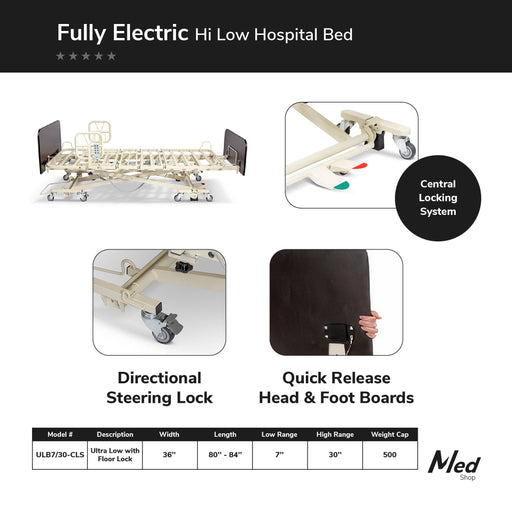
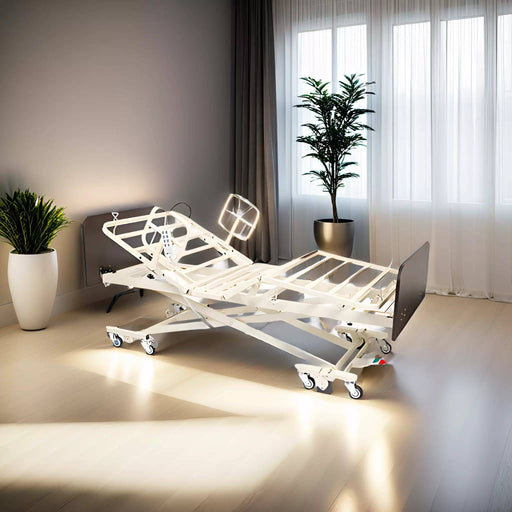


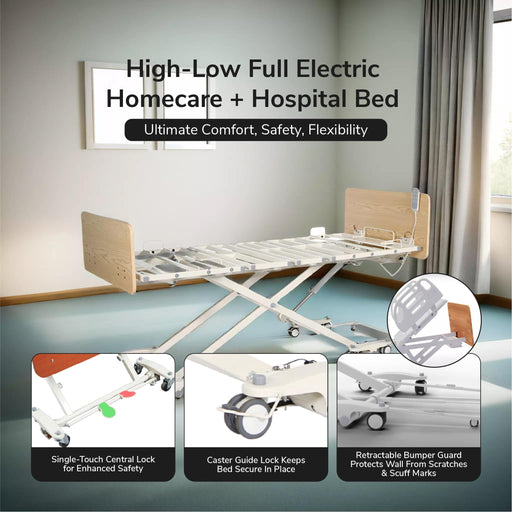
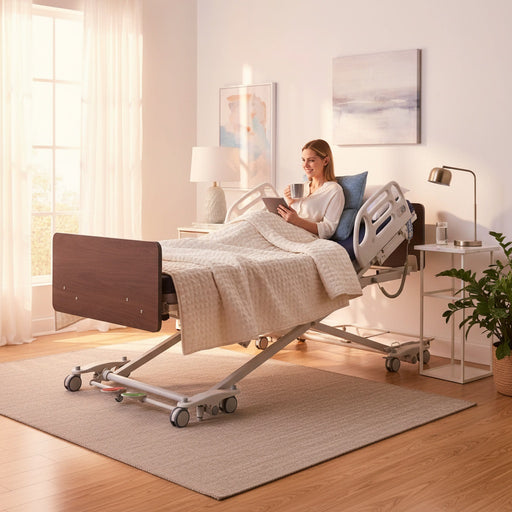
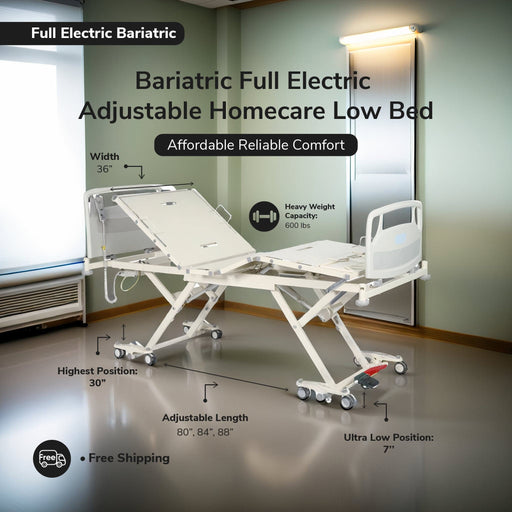
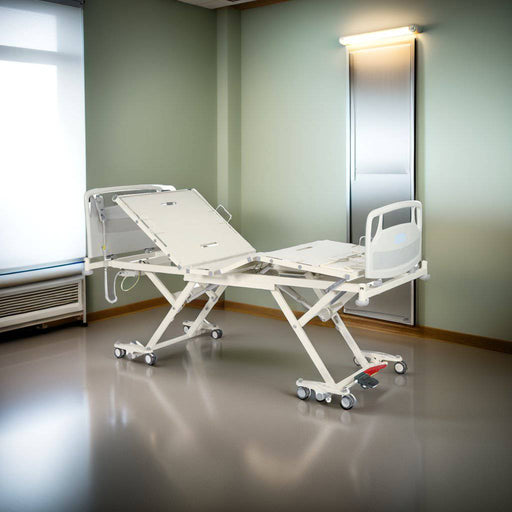
Leave a comment